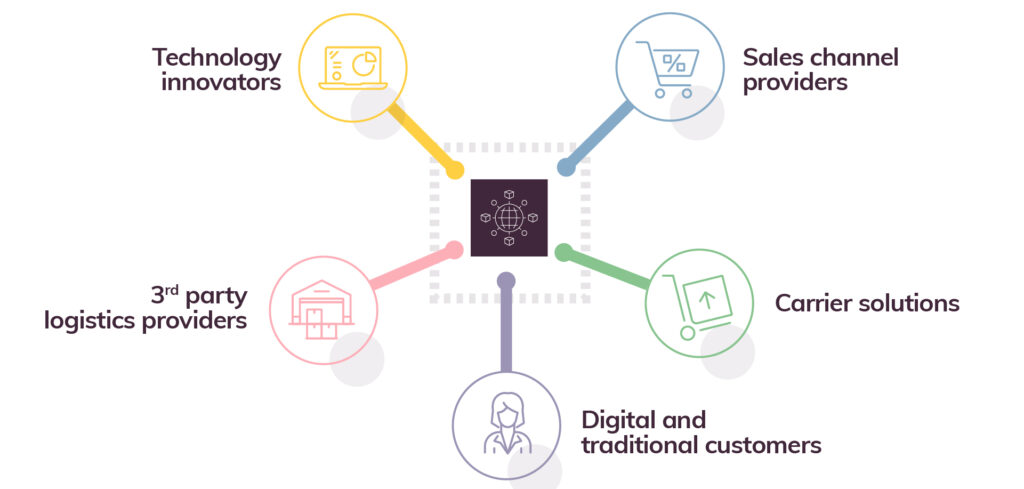It’s no secret that e-commerce is booming and that the boom has put stress on every element of the e-commerce chain – from checkout to the last mile. As a result, there is unprecedented pressure on retailers to go digital and shift to omnichannel or even become a pure online player.
It seems that there are three main drivers for this huge growth in e-commerce, which has only been accelerated by Covid-19:
- Customers’ buying expectations are changing and they now look for convenience, best value for their money and time, experiences and customization.
- Digital technologies such as broadband internet, smartphones and social are now available to any social or age group and provide access to a wider range of brands and products than ever.
- Free markets and globalization bring competition from anywhere in the world, forcing traditional players to change.
Prominent e-commerce players such as Amazon and Alibaba are leading the digital wave but they still only represent about a quarter of the world’s e-commerce. Many other retailers lack the financial power or technical expertise to undertake digital transformation.
To support a seamless customer experience, from product display to delivery and beyond, many would argue that a redesign of supply chains and last mile is needed. Many issues need to be tackled, including:
- Siloed IT – Legacy systems are difficult to integrate with each other, leading to limited visibility, traceability and control. Omnichannel experiences are difficult, time-consuming and expensive to streamline.
- Unstructured data – In fulfillment and delivery, data is collected mainly for operations and reporting. Process and customer data is not correlated, while predictive analysis, AI and automation are largely underused.
- Labor-intensive processes – The lack of data-driven processes causes lower productivity, errors, cost inefficiencies, longer delivery time and lower customer loyalty.
- Transformation velocity – Customers’ expectations change more quickly than retailers can respond. Opportunities are missed and customers are lost.
So how can smaller retailers deal with this? Their chance to keep up is to syndicate their transformational effort in the last mile through partnerships and open digital platforms. Such solutions include best-in-class players such as Postis, Bringg and Seven Senders.
Let’s consider Romania’s Postis, which offers a holistic approach including:
- Customer-driven last-mile. Delivery journey tailoring, full transparency with accurate ETAs and real-time status updates, satisfaction rating, feedback and NPS – these are all features that put customers at the core of every delivery.
- Omnichannel support. Integration at the systems level with all sales channels, physical or digital, automatically collecting and orchestrating orders along the supply chain.
- Diversification of delivery options. Hundreds of carriers are already integrated and ready to provide new delivery options: express, scheduled, curbside deliveries, pick-up from lockers or a physical store, with added services.
- Data-driven decisions. Powerful AI algorithms enable the automated selection of the best delivery option for every parcel, based on dozens of criteria related to the product, customer’s options, carrier’s capabilities, performance, and more.
- Optimized carrier management. Regardless of the last-mile ecosystem complexity, all solutions are managed from a unified control tower, with full visibility, accurate performance benchmarking, cost optimization and aligned SLAs.
A good platform can generate results quickly and with long-term impact. Recent research by Postis has shown that when well implemented, such platforms can generate 25% growth in customer satisfaction, 20% reduction in shopping cart abandonment and up to 25% decrease in delivery costs.
In the new retail environment, smaller players will need to act or risk being left by the wayside. Third-party platforms are one way of staying relevant without the need for an intense time and cash commitment. We can’t yet tell who will emerge as the leader in this exciting segment, but this is an important lifeline for mid-size retailers.


